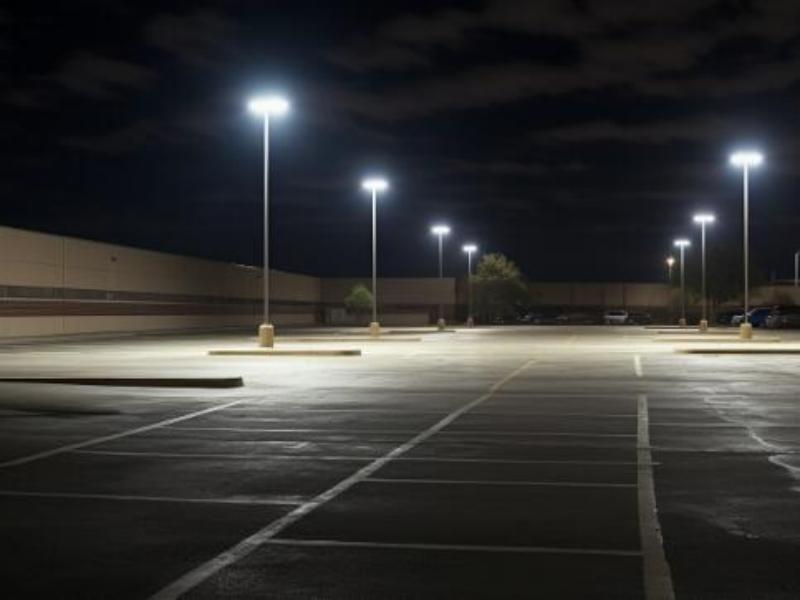En dissenyaril·luminació d'aparcament, hi ha diversos factors importants a tenir en compte. Una il·luminació adequada no només millora la seguretat de la zona, sinó que també ajuda a millorar l'estètica general de l'espai. Tant si es tracta d'un petit aparcament per a una botiga local com d'un gran aparcament en un complex comercial, el disseny d'il·luminació adequat pot marcar una gran diferència. En aquest article, explorarem algunes de les consideracions clau per dissenyar una il·luminació eficaç per a aparcaments.
En primer lloc, és crucial avaluar les necessitats i els requisits específics del vostre aparcament. Factors com la mida del recinte, la distribució i la presència de possibles perills o punts cecs influiran en el disseny de la il·luminació. A més, el nivell de seguretat requerit per a la zona també tindrà un paper important a l'hora de determinar el tipus i la ubicació dels llums.
Un dels aspectes més importants a tenir en compte és el nivell d'il·luminació necessari. Els aparcaments ben il·luminats no només faciliten la navegació i la cerca dels vehicles als conductors, sinó que també poden actuar com a element dissuasiu de la delinqüència. L'Illuminating Engineering Society (IES) recomana nivells mínims de llum per a diferents zones dels aparcaments. Les zones perimetrals i els punts d'entrada/sortida generalment requereixen nivells de llum més alts per a una major seguretat, mentre que els aparcaments interiors poden tenir nivells de llum lleugerament inferiors. Comprendre i implementar aquestes directrius és fonamental per a un disseny d'il·luminació eficaç.
Una altra consideració és el tipus d'il·luminació que s'utilitzarà. La il·luminació LED és cada cop més popular en aplicacions d'aparcament a causa de la seva eficiència energètica i llarga vida útil. Els llums LED proporcionen una il·luminació d'alta qualitat alhora que consumeixen menys energia, estalviant costos a la llarga. A més, la seva durabilitat i els baixos requisits de manteniment els converteixen en una opció pràctica per a espais exteriors com ara aparcaments.
Pel que fa a la col·locació dels llums, un enfocament estratègic és crucial per garantir una distribució uniforme de la llum a tot l'aparcament. Els llums muntats en pal s'utilitzen normalment per il·luminar grans àrees i es col·loquen per minimitzar les ombres i els punts foscos. A més, l'orientació dels llums s'ha de planificar acuradament per reduir l'enlluernament i la contaminació lumínica. Aïllar i dirigir la llum cap avall ajuda a minimitzar els vessaments de llum i millora la visibilitat dels conductors i els vianants.
A l'hora de dissenyar la il·luminació d'un aparcament, també és important tenir en compte l'impacte ambiental. La implementació de controls d'il·luminació intel·ligents, com ara sensors de moviment o temporitzadors, pot ajudar a reduir el consum d'energia atenuant o apagant els llums quan no són necessaris. A més, triar lluminàries amb altes qualificacions d'eficiència energètica i utilitzar energies renovables pot reduir encara més la petjada de carboni del sistema d'il·luminació de l'aparcament.
A més, no es pot ignorar l'estètica de l'aparcament. Una il·luminació ben dissenyada pot millorar l'atractiu visual d'un espai alhora que proporciona als usuaris una sensació de seguretat i confort. Triar làmpades amb dissenys moderns i elegants pot crear una atmosfera moderna i càlida.
Finalment, el manteniment regular del vostre sistema d'il·luminació és fonamental per garantir la seva eficàcia a llarg termini. La inspecció, la neteja i la substitució regulars de qualsevol aparell d'il·luminació danyat o defectuós són essencials per mantenir la qualitat de la il·luminació. El control del consum i el rendiment d'energia també pot ajudar a identificar àrees de millora i optimització.
En resum, dissenyar la il·luminació d'un aparcament requereix una acurada consideració de factors com ara els nivells d'il·luminació, el tipus de llum, la col·locació, l'eficiència energètica, l'impacte ambiental, l'estètica i el manteniment. Si adopten un enfocament integral del disseny de la il·luminació, els propietaris d'aparcaments poden crear un entorn més segur, protegit i visualment atractiu per a conductors i vianants. En definitiva, un sistema d'il·luminació ben dissenyat ajuda a millorar la funcionalitat i l'atractiu generals del vostre aparcament.
Si esteu interessats en la il·luminació d'aparcaments, no dubteu a contactar amb TIANXIANG.llegeix més.
Data de publicació: 24 de gener de 2024

